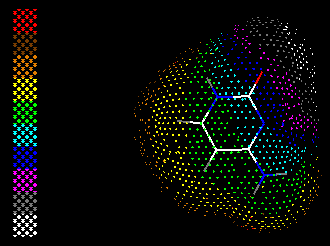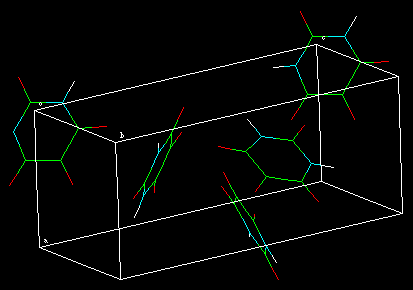
The electrostatic potential around cytosine, derived using Distributed Multipole Analysis
Intermolecular forces determine the structure and physical properties of molecular solids and liquids, and play a major role in many biochemical processes, such as drug-receptor binding. Our research involves exploiting recent advances in the theory of intermolecular forces to derive highly accurate model intermolecular potentials from the ab initio electron distributions of the molecules. The novel feature of these model potentials is that they represent non-spherical features in the charge distribution, such as lone pair and [pi] electron density, and thus can represent hydrogen bonding. Thus, these anisotropic atom-atom potentials are far more realistic, and mathematically sophisticated, than the isotropic atom-atom potentials which are generally used in simulations. We are using these state-of-the-art model potentials to study a wide range of problems, with particular emphasis on the organic solid state.
to top
